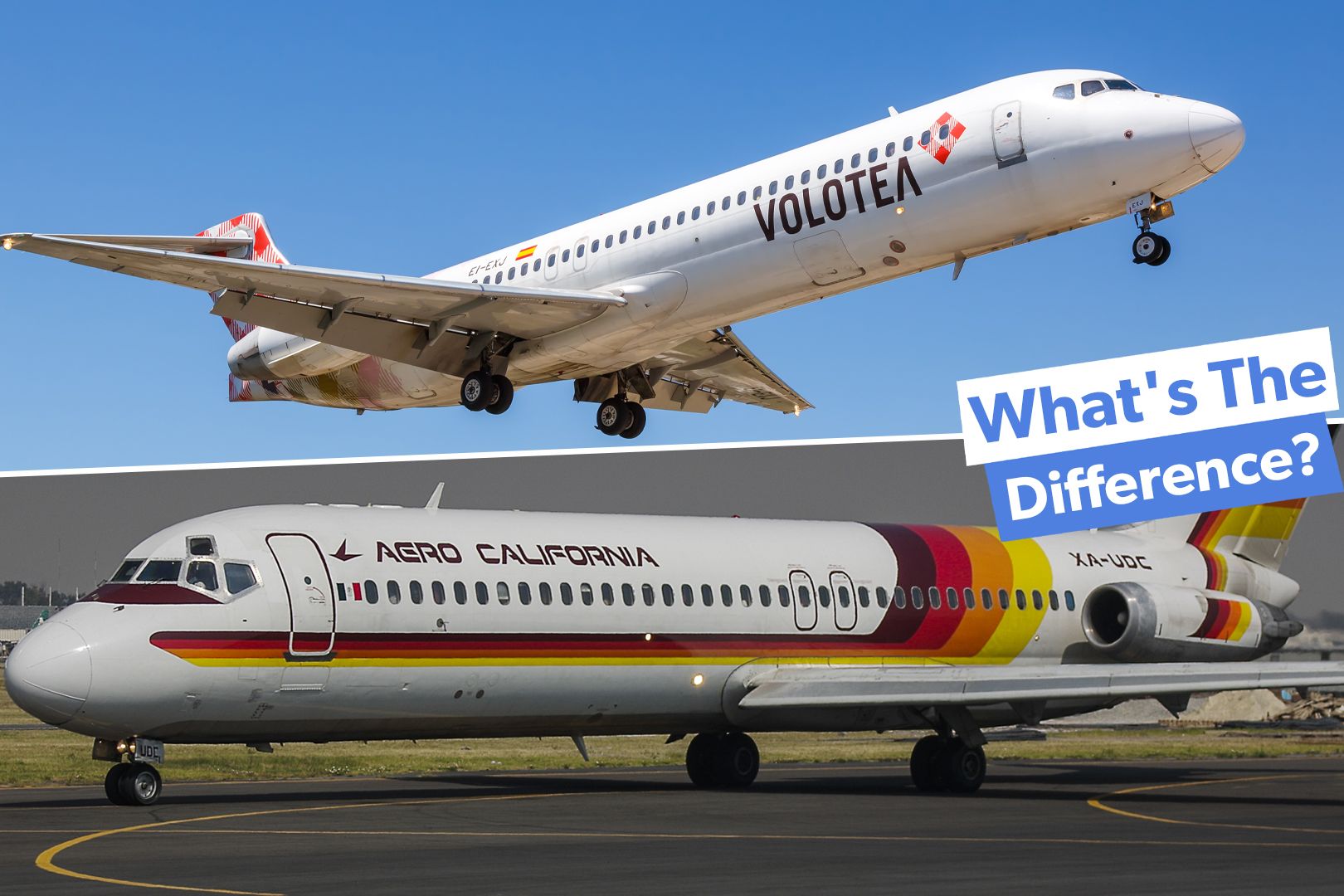Summary The Boeing 717, derived from the DC-9, features a stretched fuselage and new engines for enhanced performance. The 717's Rolls-Royce BR715 engines use EEC for digital fault tolerance and trend monitoring. The Boeing 717 includes a modern cabin interior, advanced flight instruments, and avionics system.
The Douglas Aircraft Corporation DC-9 and Boeing 717 are part of the same aircraft family, sharing many design and performance features. The Boeing 717, being part of a much later generation, features distinct design and technology improvements. This article provides salient similarities and differences between the two commercially successful aircraft types, as highlighted by Boeing .

Background The Douglas DC-9 was developed in the early 1960s by Douglas Aircraft Company. The aircraft first flew in February 1965 and entered the commercial market with Delta Air Lines in December of that year. In 1967, the company merged with McDonnell Aircraft Corporation to form McDonnell Douglas (MD).
The DC-9 was developed into MD-80 in 1979 , with a larger wing and a higher Maximum Takeoff Weight (MTOW). The commercially successful MD-80 was developed into MD-90 in 1993, with a stretched fuselage, new engines, and an updated flight deck. McDonnell Douglas was acquired by Boeing in 1997.
The shorter (and final) variant of the family, MD-95, was renamed and marketed as Boeing 717. The Douglas DC-9 entered service with Delta Air Lines in 1965. Douglas DC-9 vs Boeing 717 The Boeing 717 shares the wing size (93 ft 4 in, 28.
5 m) with DC-9-30 but has a stretched fuselage (additional 4 ft 9 in) forward of the wing. As such, the 717 can seat up to 106 passengers in a two-class configuration. With the MTOW comparable to the DC-9-50, the Boeing 717 can fly a range of 1,430 NM (1,646 miles, 2,648 km) in the basic configuration.
Apart from the design and basic configuration, the Boeing 717 features many improvements over the DC-9. Power plant and systems The Douglas DC-9 used a Pratt & Whitney low-bypass turbofan, JT8D, engine. The 717, on the other hand, uses Rolls-Royce BR715 twin-shaft turbofan engines, each capable of generating nearly 19,000 lbf (84.
3 kN) of takeoff thrust. The engines use Electronic Engine Control (EEC) that uses electrical channels to replace pneumatic and hydraulic inputs. The EEC also provides digital fault tolerance and trend monitoring of engines.
Many engine systems on the DC-9 had to be changed with the newer EEC-controlled engine. The air conditioning and cabin pressurization systems are updated to allow electronically controlled inputs. Unlike DC-9, which featured circulation of cabin air, the air conditioning system on 717 provides fresh air for pressurization and ventilation.
Aircraft interior With the stretched fuselage comes an improved cabin interior with new sidewall panels, larger overhead baggage compartments, a new lighting system, and modular lavatories. Most of the cabin designs on the Boeing 717 include modular assemblies for easier installation and replacement, and as standard, the aircraft was configured in a 2-2 layout in business class and 2-3 in economy class, as showcased in the above photo of the cabin interior of a Mexicana Click 717. A number of 717s are still in operation but only with a few carriers.
Flight instruments and controls The Boeing 717 features a much superior flight deck, including instruments, controls, and displays. The state-of-the-art avionics with integrated computers and centralized fault tolerance systems make the 717 much superior. New flight crew warning and alert systems, including integrated panels and lights, are installed.
The primary flight control system is the same as on the DC-9, providing the utmost reliability through the two-position slat system. Similarly, the fuel system is the same as on the DC-9, where fuel gauges and transmitters are upgraded to be more reliable. The aircraft involved had only been in service less than a week prior to the accident.
The Douglas DC-9 and Boeing 717 today The Boeing 717 remains in commercial service today with three major airlines: Delta Air Lines Hawaiian Airlines QantasLink. The latest data from ch-aviation shows that these three airlines currently operate 90, 19, and 6 Boeing 717s, respectively. The rear-engined twinjets rank among Delta's oldest narrowbody aircraft.
Meanwhile, only a handful of Douglas DC-9s are still in service around the world, the majority of which are used by cargo carriers such as Mexico's Aeronaves TSM. The one remaining DC-9 still in passenger service is currently based at Nairobi's Jomo Kenyatta International Airport (NBO), operated by African Express Airways. 16 original DC-9 aircraft remain in service, mostly in cargo and military use.
There are, however, a number of Douglas DC-9s on display currently on display across the world. These include: N675MC - on display at the Delta Flight Museum at Hartsfield-Jackson Atlanta International Airport (ATL) MM62012 - on display at Milan Malpensa Airport (MXP) PK-GNC - painted in Garuda Indonesia's retro livery and on display at Soekarno–Hatta International Airport (CGK) in Jakarta EC-BQZ - on display at Adolfo Suárez Madrid-Barajas Airport (MAD) N942ML - painted in an Interjet livery and on display at the Centro Comercial Santa Fe shopping center in Mexico City..



















